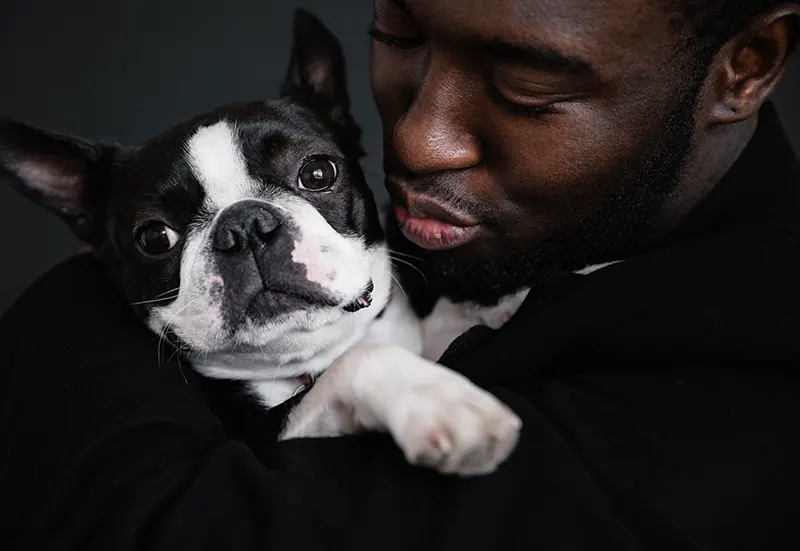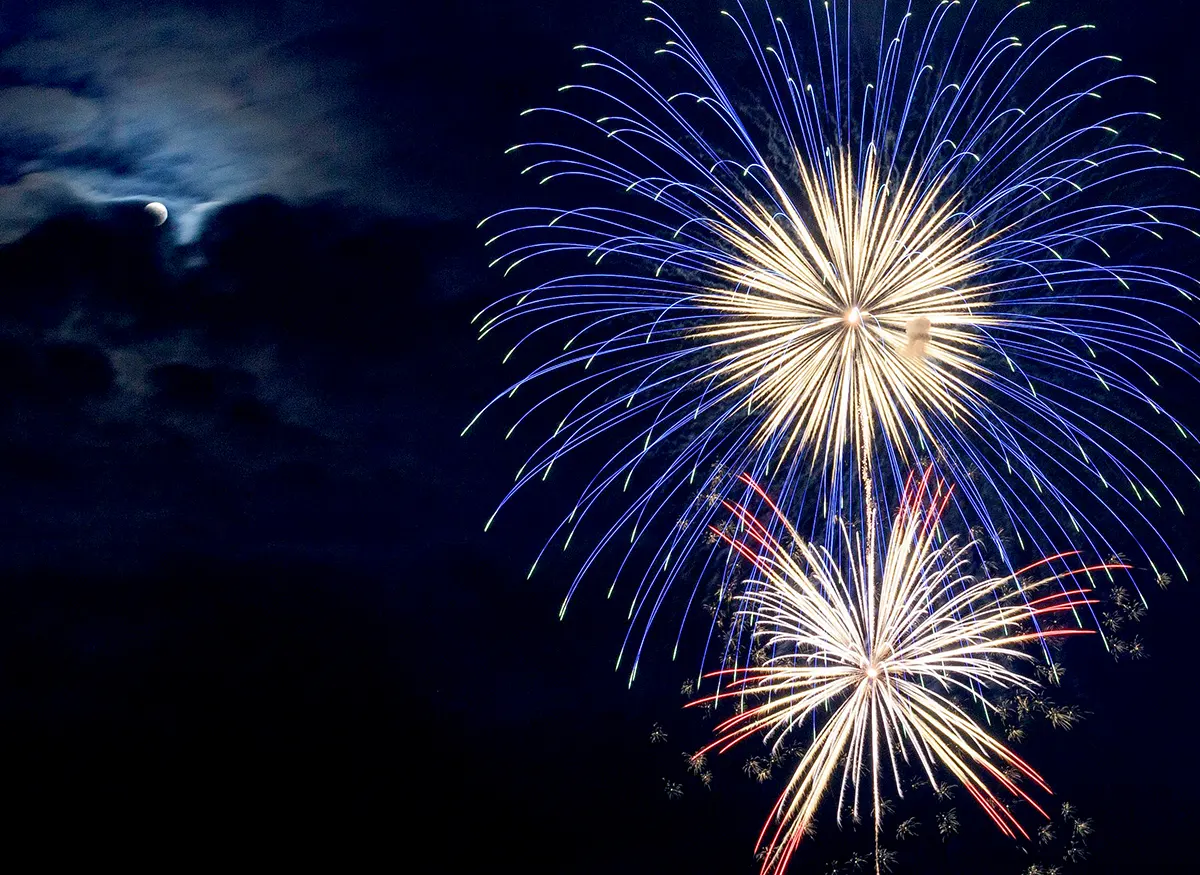Fireworks are a highlight of human celebration in the US during the summer, but for dogs, they can be very frightening. Fourth of July fireworks can push a nervous canine to the edge. Sitting down with your dog to explain that the exploding lights in the sky are not a sign of impending doom isn’t likely to work. Despite the language barrier, though, you can still help your canine overcome his fears.
Intervention is key because noise anxiety rarely improves on its own. Ideally, intervention starts early, but even dogs with pronounced fears can be helped. A combination of desensitization, positive reinforcement, and coping techniques can be used to train your dog to be more confident around loud noises.
Create a game of hearing sounds and responding calmly. Start with neutral sounds your dog notices and is accustomed to, like the dishwasher or the television. When the sound starts — at the beginning of the washing cycle, for example, or when you first turn the TV on — mark your dog’s calm reaction to it with a word or a click and reward her with a super delicious treat. Once your dog understands the game, begin to mark and reward for calm behavior in response to sounds that typically startle her or provoke a reaction, like thunder or explosions. Ideally, this will change the way she perceives those sounds — instead of being afraid when she hears them, she will look to you for a treat.
Condition your dog to be comfortable around noises that make him anxious by playing recordings of the noises at a low level. Pair the recording with a positive event, like mealtime or trick training. At first, keep the volume low enough that your dog does not display any signs of fear. Over time, if your dog remains relaxed, increase the volume. If it’s ever too loud and your dog is acting anxious or fearful, turn the volume down to where the dog is again relaxed and enjoying his treat or meal before ending the session. If possible, always end on a positive note, at a point of success.
Go slowly and introduce noises at a gradual pace. For example, if your dog is fearful of the vacuum cleaner, have someone else run it in a different room with the door closed while you spend time working with your dog on learning a trick. As soon as your dog begins to show positive emotions or indifference toward the vacuum noise, the sound can be made a little louder by opening the door a crack. The goal is to get your dog to a place where he can remain calm in the room with the vacuum while it is running, but be patient – this may take time.
 Distract your dog by pairing positive things with events that once caused fear. If your dog loves to fetch or tug, let the sound of thunder (starting with the recording) be a signal that it’s time to play. Other options are to give your dog a stuffed Kong with highly palatable goodies inside when the noise starts or to focus him on behavior he enjoys, like trick training with rewards for good behavior. For some dogs best, it is easiest to release tension through movement; in this case, walking back and forth with your dog in a covered area while the noise lasts may help him manage his fear.
Distract your dog by pairing positive things with events that once caused fear. If your dog loves to fetch or tug, let the sound of thunder (starting with the recording) be a signal that it’s time to play. Other options are to give your dog a stuffed Kong with highly palatable goodies inside when the noise starts or to focus him on behavior he enjoys, like trick training with rewards for good behavior. For some dogs best, it is easiest to release tension through movement; in this case, walking back and forth with your dog in a covered area while the noise lasts may help him manage his fear.
Minimize the scare factor and try drowning out scary noises with calming sounds. A white noise device, fan, or fountain can provide background noise. You can also play soothing music, such as classical music or music formulated to calm pets. Some dogs are comforted by petting, being talked to, or being held, while others fare better when asked to focus on a task. Do what works best for your dog. And don’t be afraid to think outside the box: Our family has a dog who shakes and trembles when we drive over a rumble strip on the road. To help him cope, we start a group howl when we hit one. It sounds crazy, but it works — he goes from shaking violently to smiling happily in just a few seconds.
Create a safe space, ideally, in an area your pet is familiar with and willingly enters, like the bathroom, a closet, or the basement. Make the space cozy and inviting by placing cushy blankets and a crate inside to provide a hiding space. Consider spritzing the space with dog-appealing pheromones to help create an extra sense of calm. You may also want to consider a compression garment like the Thunder Shirt, which can be calming for some dogs.
For severe cases of noise phobia, talk to your veterinarian. In addition to behavior modification, she may recommend medications that you can give your dog before fireworks, thunderstorms, and other noisy situations to help reduce his anxiety.

